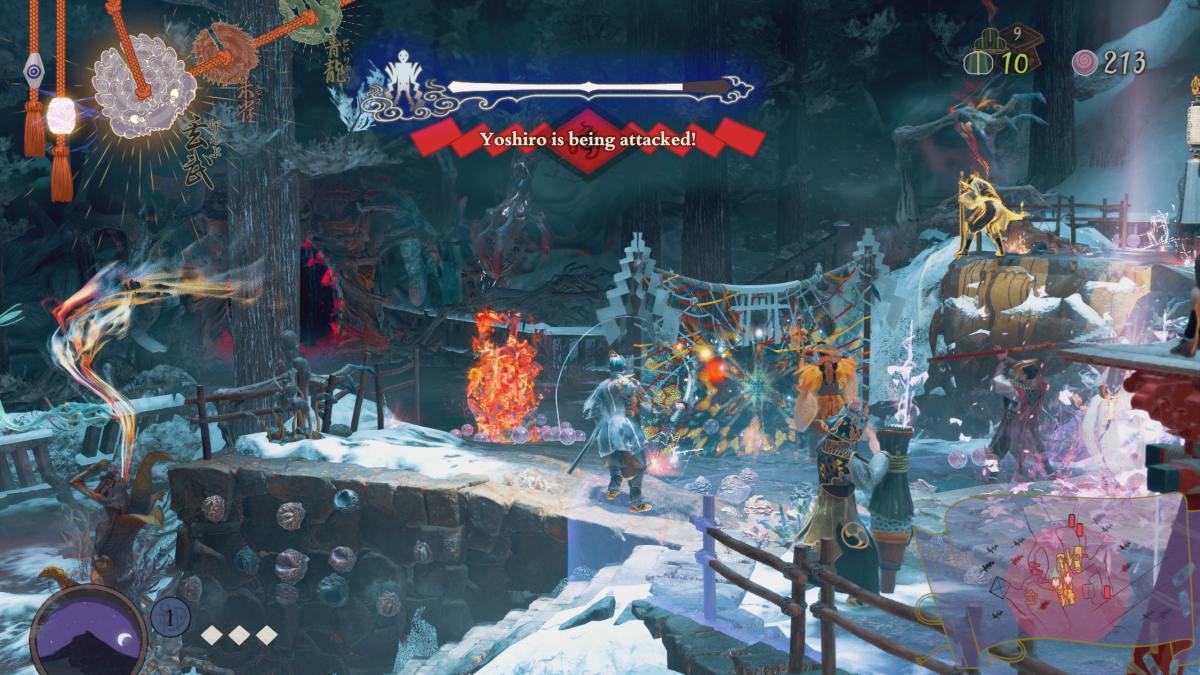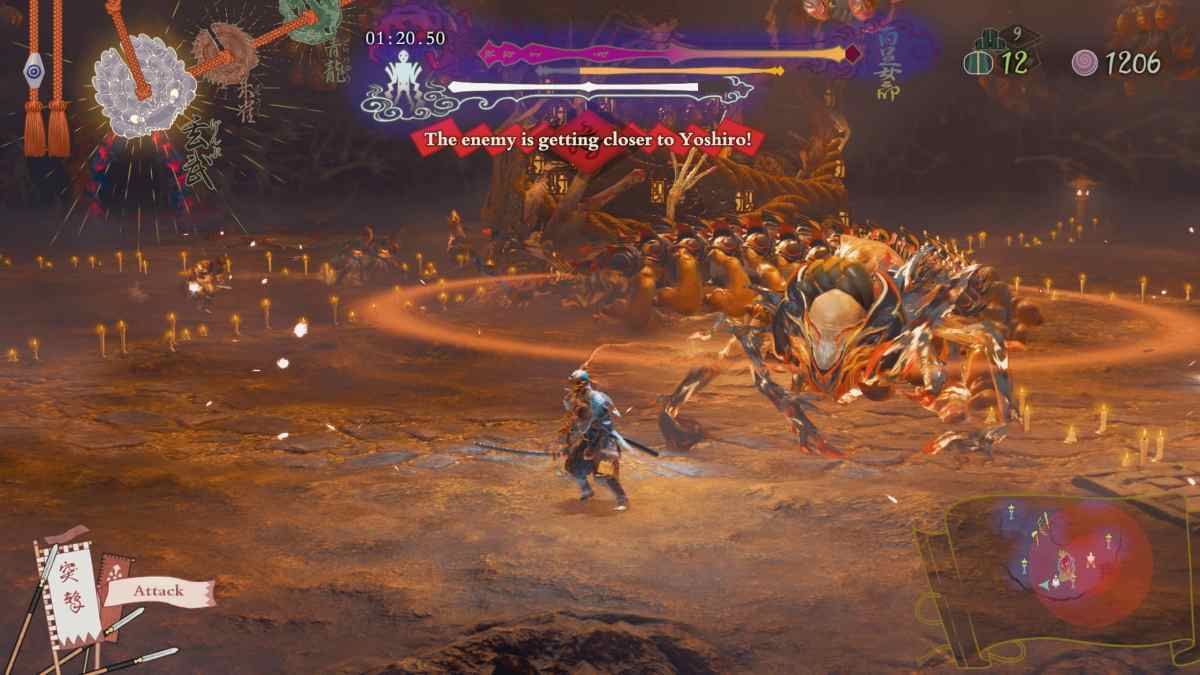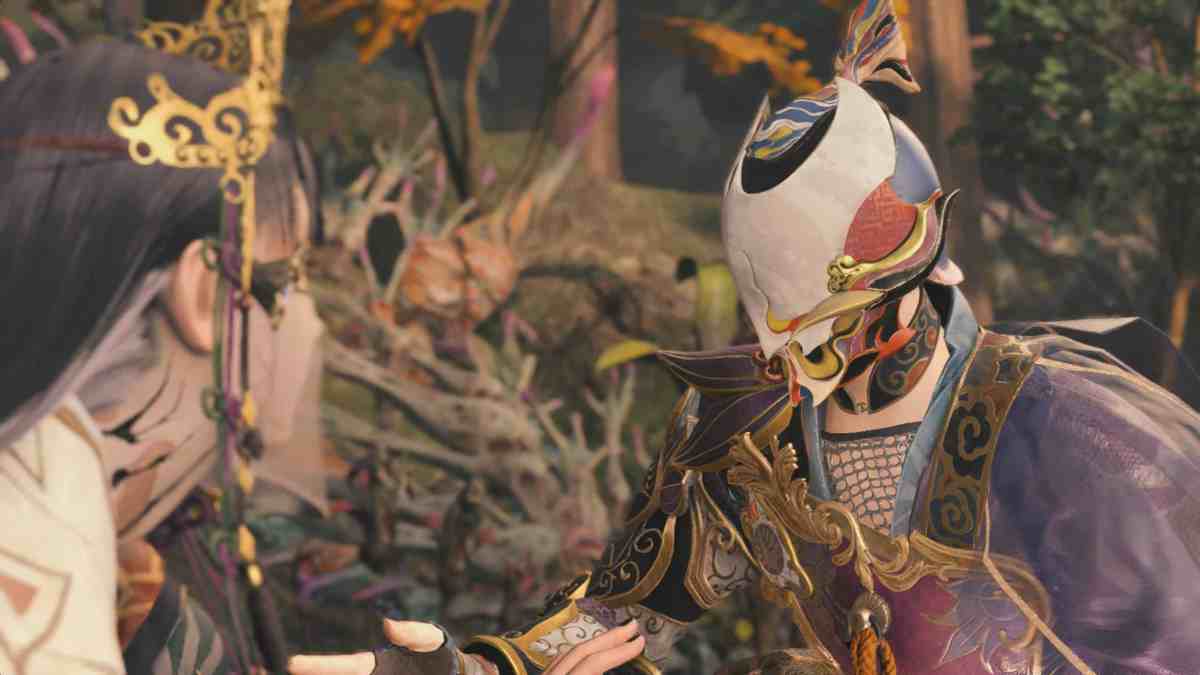Kunitsu-Gami: Path of the Goddess feels like something that got lost on its way to launching on the Wii-U, and I mean that as the highest of praise. It’s one of those uniquely odd games that we rarely get from AAA publishers anymore, with development budgets now being as high as they are.
Set on a wooded mountain in Edo-period Japan, you play as a katana-wielding warrior named Soh. Your task is to protect a holy maiden named Yoshiro on her pilgrimage to cleanse the demonic Seethe that has infested the once-idyllic villages that litter the mountain.
I will now do my best to explain the weirdness
I struggled to adequately explain Kunitsu-Gami’s gameplay in my preview last month, as did the PR representative who handed me the controller upon arrival at that event. But having now played the game, I feel well-positioned to have another crack.
The game operates on a day-night cycle, with each lasting around eight minutes. Day time is where all your preparation and exploration happen, while nightfall is combat against a demonic tide.
During the daylight hours, Yoshiro moves toward an infested torii gate, with the goal of cleansing it. Her movement is fuelled by crystal orbs earned in a variety of ways, but primarily through eliminating Seethe roots during the day, and destroying demons during the night. These orbs are also used to turn the hapless villagers you’ll find throughout each map into various kinds of support classes, the commanding of which will be vital to your success. A carpenter features as a member of Yoshiro’s retinue, and they can repair traps and defenses scattered throughout each map during the day.
If you’re thinking that it sounds like there’s a lot of rapid running around and on the fly strategising during those scant daylight hours, then you’d be correct. It always provides a thrilling little rush that hits differently to that of the nightly battles, and I really love the dynamic of the shift between the two.

If Soh is killed, they become a ghost, and can still command villagers and collect orbs until their respawn timer is up. If Yoshiro is killed, then you instantly fail, but you’ll have the ability to restart from the beginning of whatever night you were on, with all progress intact. It even grants you the option of changing up your equipped special abilities and support trinkets, which goes a long way to ensure the adventure never really becomes frustrating to play.
Maps grow increasingly large and complex as events progress, and you’ll quickly have to deal with multiple torii gates and multiple lanes for demons. I had worried the formula would grow stale after a few levels, but the maps themselves mix things up regularly. The spectacular boss fight levels that hit every so often are not only a treat in themselves too, but also reward you with a new villager class type when defeated.
Mechanically the whole thing is kind of Brütal Legend meets Samurai Warriors, plonked down into the shell of a MOBA – but that’s selling the feel and vibes of it all completely short.
In peacetime
After each village is freed from the Seethe, you can revisit them, and use the villagers rescued to make repairs. These take varying lengths of time to complete, which ticks by based upon subsequent completion of levels. Making repairs are one of severals ways you can earn currency to upgrade Soh, as well as each of the villager classes. They also allow you to unlock trinkets to give various passive effects, unlock wood carvings which give a little lore tidbits, and most strangely, they unlock a variety of historic Japanese sweets to gift to Yoshiro.
These sweets seem to mechanically do nothing, but they’re stunning to look at, fascinating to read about, and do provide a lovely little reprieve to the increasingly somber tone of Kunitsu-Gami’s 20-ish hour adventure.

They also provide a reason to slow down, and pace yourself. Every level and boss fight in Kunitsu-Gami can be replayed at any time, and each features a variety of well-rewarded challenges and hidden treasures. Many of these are also completely impossible to achieve or discover without the use of powers or villager class types unlocked much later on. More still aren’t even able to be earned outside of new game plus.
Kunitsu-Gami wants you to be both methodical and experimental in how you engage with it, which is something I really enjoy. I got through most of the game just fine, spending most of my upgrade points max-levelling the ranged villager classes, but the fact that I’m eager to finish NG+ with a new approach speaks to how satisfying different battle strategies are. The gorgeous diorama-like designs of every environment, and the absolutely stunning musical score, are things that I’m not ready to stop spending time with, either.
I played through the whole game in English-subtitled Japanese on an OLED Steam Deck (which it runs terrifically on), with a good pair of headphones, and it’s been one of the loveliest audio-visual experiences I’ve had all year.
In closing
I’ll be honest, Kunitsu-Gami: Path of the Goddess is probably not a game I would’ve made time for, had I not been granted a hands-on opportunity with it. I’m glad it’s launching on Game Pass, as I expect many will be in the same boat as I was.

It’s deeply weird, in a way that makes it hard to communicate a recommendation, though I truly hope the 900-odd words above make a convincing argument in its favour. It cribs from everything, but creates something wholly fresh and original in doing so.
I’ve never played anything quite like it, and I absolutely adore it. It feels destined to become an overlooked gem but frankly, it deserves better. It is a game of specific scope and vision that’s executed upon perfectly. Take the chance on it, and it may just surprise and delight you as much as it did me.
Five stars: ★★★★★
Kunitsu-Gami: Path of the Goddess
Platform(s): PC, Xbox One, Xbox Series X/S, PlayStation 4, PlayStation 5
Developer: Capcom
Publisher: Capcom
Release Date: 19 July 2024
A PC code for Kunitsu-Gami: Path of the Goddess was provided by the publisher for the purposes of this review. GamesHub reviews are rated on a five-point scale.





